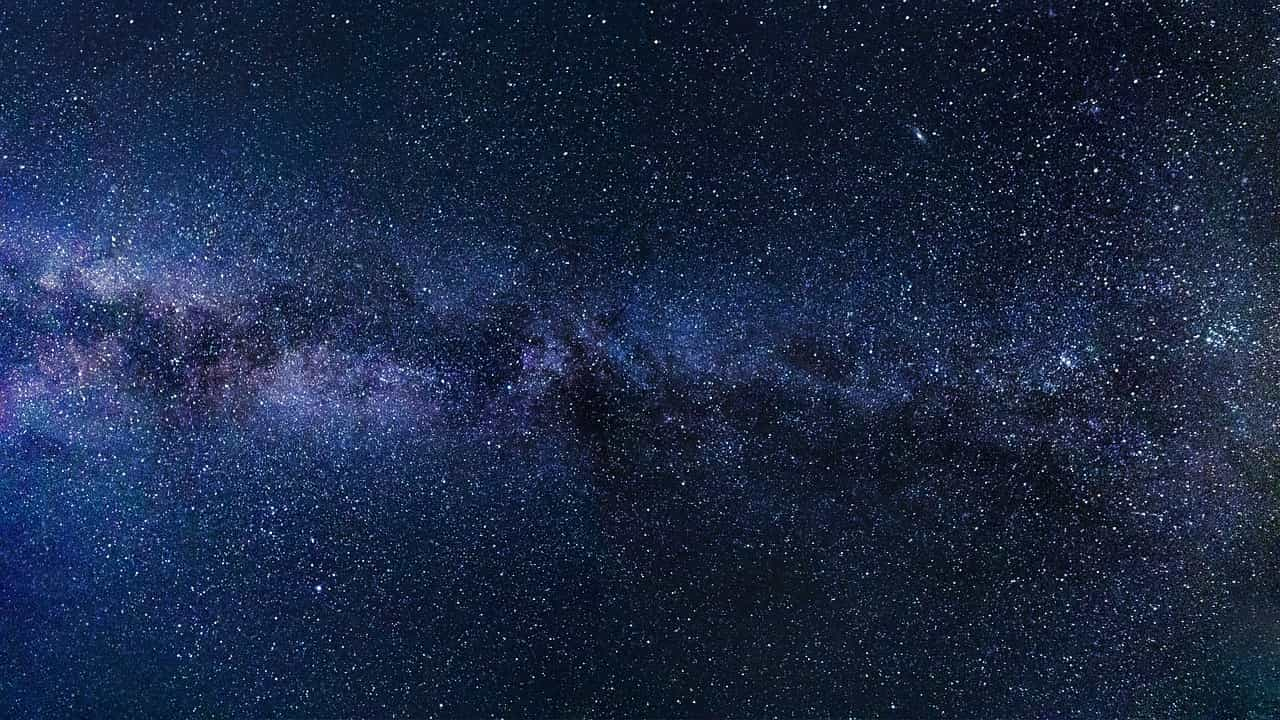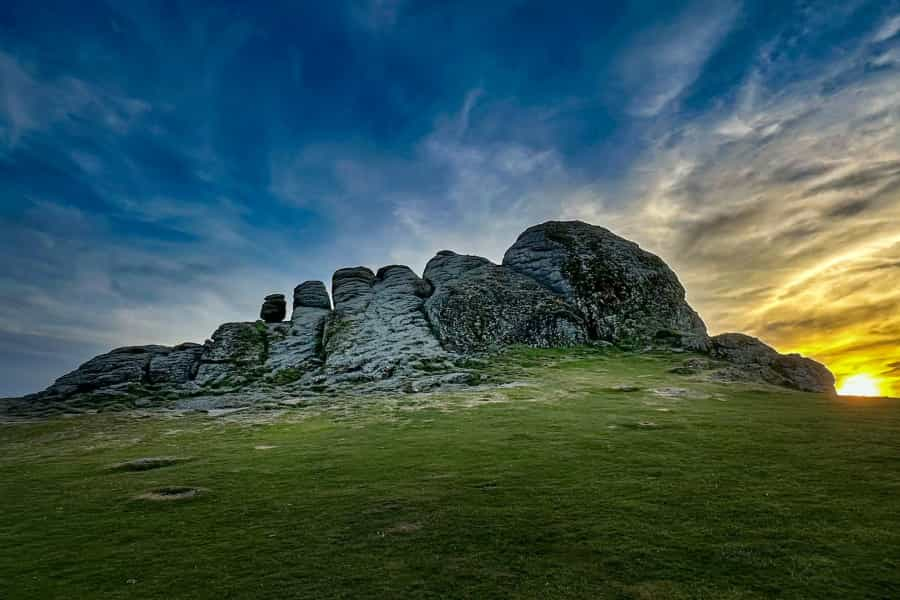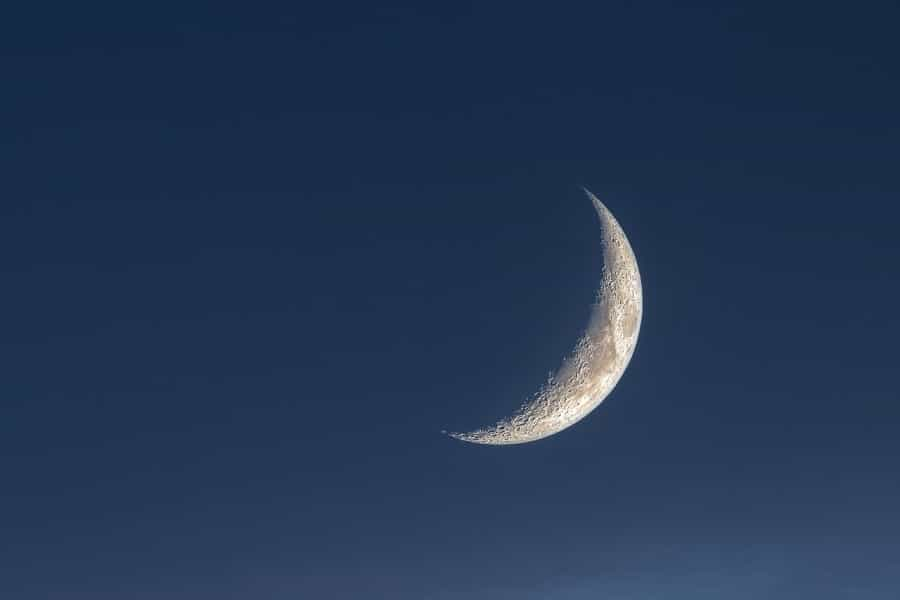Dartmoor Stargazing

Dartmoor’s open moorlands and high granite tors are deeply beloved of outdoor enthusiasts, and the national park is also an excellent place to marvel at the beauty of the night sky. Many of the moor’s remote areas have been recognised as Dark Sky Discovery Sites due to their easy access, minimal light pollution from street lights or buildings and very few obstructions – all of which adds up to ideal conditions for astronomy. Stargazing is fascinating, peaceful, romantic and free – what more could you want from a holiday activity?
Our guide to Dartmoor stargazing takes in the best sites for astral observation, useful tips for what to take with you, and advice on how to make the most of your experience.
Optimal stargazing locations in Dartmoor
Haytor Rocks
With a convenient elevated location, low light pollution and an unobstructed view of the surrounding sky and landscape, Haytor Rocks is one of the best places to stargaze on Dartmoor. A mile outside Haytor village on the B3387, Haytor car park is a five-minute walk from the tor itself and open 24 hours a day (and there are no charges after 6pm). If you’d like to try your luck here, GoStargazing’s Haytor page has useful info on the local weather and conditions.

Burrator Reservoir
Convenient access, low levels of ambient light and the added pleasure of seeing the stars reflected in the water make Burrator Reservoir another good choice for stargazing. The nearby Burrator Quarry car park is close to the water and open 24/7, with plenty of room to park after dark. If you’d like a more elevated view, Sheepstor stands in a prime position overlooking the water, and is only a 20-minute walk away. Check GoStargazing’s Burrator page for details of the local light and weather conditions
Hound Tor
Easy access from nearby Manaton makes Hound Tor a popular choice with local stargazers. You’ll have to walk a little way to reach the rocks (which rise to 441 metres above sea level), but you’ll be rewarded with particularly good night sky visibility. GoStargazing’s Hound Tor page features information on the local weather and will help you choose the best time to visit. This dramatic location is said to have inspired Sir Arthur Conan Doyle’s most famous Sherlock Holmes tale, The Hound of the Baskervilles, but it’s probably better not to think too much about that.
Meldon Reservoir
Surrounded by open moorland, with great views of the Okement Valley and reflections of the sky at night, Meldon Reservoir is another good choice if you’re planning a stargazing session. It’s free to park in the car park nearby, which is moments from the water (but please check local information). If you’re planning a visit, GoStargazing has advice on the best light and weather conditions.
What to expect in the Dartmoor skies
Dartmoor’s high elevation and a lack of light pollution or obstructions mean that there are plenty of stars, planets and constellations that stargazers can spot with the naked eye or an affordable pair of binoculars, From a good dark location, there are more than 2,000 you might see. We can’t list them all, but here are just a few that are commonly visible on most nights.
- The Moon – admittedly, this one is quite obvious, but it’s worth remembering that nights when the moon is least bright are the best for observing other stars and planets
- Planets including Mercury, Mars, Saturn, Venus and Neptune are visible at various times of year, and can be identified by the fact that they don’t twinkle like stars do
- Constellations including The Plough (like a saucepan), Orion’s Belt (three bright stars in a line) and Cassiopeia (like a W) are prominent features in the UK’s night sky and likely to be familiar even to the uninitiated
- Stars like The North Star and Sirius are also easy to spot
- The Milky Way is visible as a ‘band of light’ across the sky year-round, but you’ll get the best views of all in early autumn
- Star clusters are among the brighter objects in the sky, and popular targets for beginners to spot
- Celestial events such as meteor showers (or ‘shooting stars’) and the Aurora Borealis (the ‘Northern Lights’) are visible at certain times of year, and are some of the most exciting phenomena to catch a glimpse of
If you’re lucky enough to see the Northern Lights, you’ll never forget it. Caused by electromagnetic particles from the sun hitting the Earth’s atmosphere, the glowing, shifting bands of green, purple and pink are truly mesmerising, and a justified favourite of astrophotographers. They’re visible more often in the north of the UK, but can be seen occasionally from Dartmoor (especially in winter). It’s possible to predict the most likely times when you might spot them, and AuroraWatch UK is a great place to pick up a forecast.
Blessedly predictable, and always at the same times of year, there are several annual meteor showers that are commonly visible from the UK. The website of the Royal Museums Greenwich publishes a handy annual calendar with exact dates and the best times to spot them, including The Quadrantids in January, the Lyrids in April, the Perseids in July/August, the Draconids in October, the Leonids in November and the Geminids in December.

Stargazing tips for Dartmoor
Here are a few simple things that you can do to make your stargazing trip on Dartmoor even more enjoyable.
-
The best time for stargazing on Dartmoor is on moonless nights in autumn and winter
-
Check the weather forecast before you go - cloudless nights are best
-
Be prepared, as nights can be chilly at any time of year, and especially in winter; dress comfortably with plenty of layers, a warm jacket, a hat and gloves, and bring a blanket
-
A cheap pair of binoculars will help you see far more, and a stargazing app for your smartphone will help you identify what you see
-
Bring some food and a hot drink with you
-
Let your eyes get used to the dark, and don’t use bright white lights – try carrying a red cycle light or torch instead, and set your mobile phone to night mode
-
When taking pictures, make sure your phone is set to its nighttime mode, and use a tripod if you can to keep it as still as possible. If you have a manual camera, try using a wide angle lens or a wide aperture, and an ISO setting of between 800 and 3200
-
Let someone know where you’re going, and when you plan to be back

Useful stargazing apps and resources
Stellarium: Programme your location into this website or their free mobile app for a real-time view of the sky above you, with clickable details of what you can see.
Time and Date website: The astronomy page of this informative website has information about numerous astral phenomena, and you can programme in your location for details of what’s visible on any given date.
Star Walk 2: An easy-to-use astronomy app that helps you to identify stars, planets and constellations by simply pointing your device at the sky (free and enhanced paid versions available).
AuroraWatch UK: This app will keep you informed about the possibility of seeing the Northern Lights, and send alerts if the likelihood is high.
Night Sky: Another good point-and-press app for Apple users that provides a map and information when you point your device upwards.
Easy access, dark skies and beautiful natural sites make Dartmoor one of the best places to stargaze in the UK. Whether you’re a seasoned astronomer, a beginner looking to learn more about the universe, or just want a serene night out with captivating views, it’s time to start planning a trip.
Local enthusiasts around Dartmoor occasionally organise guided stargazing events. They provide a great chance to get tips from experts, and to use a telescope. Watch out for listings on Visit Dartmoor, Dartmoor Skies, and GoStargazing, which also has a wealth of tips and advice to help get the most out of your trip.
If you’re already planning your Dartmoor stargazing trip and need somewhere to pitch your tent, check out Pitchup’s list of Dartmoor campsites.